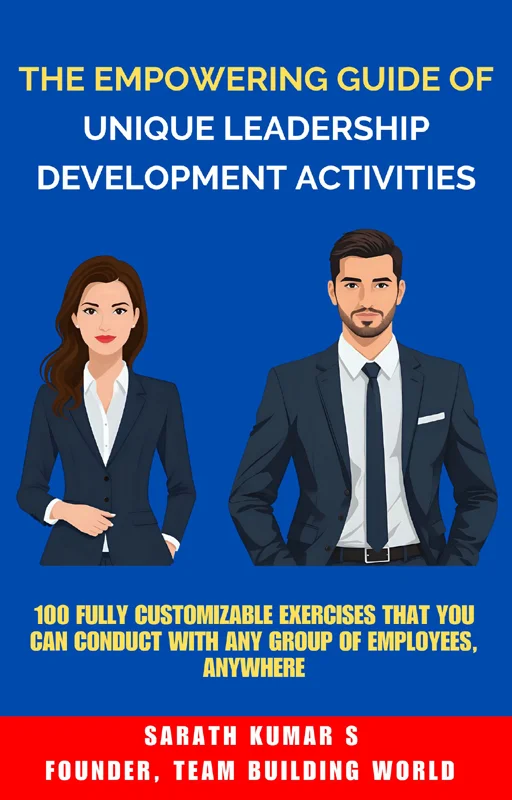12 Emerging Business Strategies for Leaders
Are you in search of emerging business strategies?
The business landscape is evolving faster than ever, requiring leaders to adapt and stay ahead of the curve. With technological advancements, shifting market demands, and new workforce dynamics, innovative strategies are critical to driving sustained success.
In this article, let’s see 12 emerging business strategies every leader should consider to remain competitive and future-ready. They can help you capitalize on new opportunities, mitigate risks, and unlock the full potential of your organization.
Why Do Emerging Business Strategies Matter?
Emerging business strategies are crucial because understanding them enables organizations to stay competitive in a rapidly changing environment. It also helps leaders anticipate trends, foster innovation, and ensure long-term growth. So, consider these key points when evaluating emerging strategies:
Adapting to Market Trends
Emerging strategies help businesses track and respond to shifting market demands, ensuring they remain competitive.
Driving Innovation
They encourage organizations to explore new technologies and creative processes, fostering continuous improvement.
Enhancing Customer Engagement
By adopting forward-thinking approaches, businesses can better understand and meet their customers’ needs, thereby building long-term relationships with them.
Managing Uncertainty
These strategies equip organizations with the tools to anticipate challenges and adapt swiftly, minimizing potential risks.
Boosting Operational Efficiency
Leveraging modern strategies can streamline operations, reduce costs, and increase overall productivity.
Identifying Growth Opportunities
Emerging business strategies help uncover untapped markets as well as opportunities, driving revenue and expanding market share.
12 Emerging Business Strategies for Leaders
Here are some of the cutting-edge business strategies that can set you apart from your competitors.
#1. Prioritize Agile Operations
Agile operations allow businesses to rapidly adapt to changing market dynamics, improving resilience and staying competitive. This approach focuses on efficiency, flexibility, and collaboration to achieve goals effectively. Key practices to prioritize include:
- Implementing iterative workflows that encourage continuous improvement.
- Promoting cross-functional teamwork to enhance decision-making.
- Leveraging real-time data to respond quickly to market changes.
- Streamlining processes to eliminate inefficiencies and reduce costs.
#2. Leverage Data-Driven Decision-Making
Data-driven decision-making empowers organizations to make informed choices based on accurate and timely information. By utilizing data, businesses can uncover valuable insights, predict trends, and optimize outcomes. To effectively leverage this approach, consider these key practices:
- Collect and analyze high-quality, relevant data to ensure reliable insights.
- Use advanced analytics tools to identify patterns and opportunities.
- Encourage a data-centric culture where decisions are backed by evidence.
- Regularly review and refine data strategies to adapt to evolving needs.
#3. Foster a Culture of Innovation
Innovation thrives in environments where creativity and experimentation are encouraged. To build such a culture, leaders must set the tone and provide resources that empower teams to think outside the box. Consider these actionable steps to foster innovation within your organization:
- Create spaces and opportunities for brainstorming as well as collaboration.
- Reward and recognize employees who propose new ideas or challenge the status quo.
- Provide ongoing training and development to encourage creative problem-solving.
- Accept that failure can be a stepping stone to success, and promote a growth mindset.
#4. Invest in Sustainable Practices
Sustainability is no longer just a trend but a critical component of long-term organizational success. Investing in sustainable practices benefits not only the environment but also strengthens brand reputation and operational efficiency. Consider the following strategies to make sustainability a core part of your business approach:
- Conduct regular energy audits to identify opportunities for reducing waste and consumption.
- Incorporate renewable energy sources, such as solar or wind power, into daily operations.
- Source materials responsibly and prioritize partnerships with eco-friendly suppliers.
- Encourage recycling and waste reduction practices across all departments.
#5. Adopt a Customer-Centric Approach
Adopting a customer-centric approach is essential for building trust and fostering long-term relationships with your audience. It involves understanding your customers’ needs, preferences, and expectations at every touchpoint. So, consider the following points:
- Personalize customer experiences by leveraging data and insights to tailor your offerings.
- Actively seek and act on customer feedback to improve products or services.
- Provide exceptional, responsive customer support across all channels.
- Focus on building loyalty through transparent communication and consistent value delivery.
#6. Empower a Diverse Workforce
A diverse workforce is a driving force for creativity, innovation, and success within any organization. By fostering an inclusive environment, companies can unlock the full potential of their teams and ensure long-term growth. For this, consider these things:
- Promote diversity in hiring practices by actively seeking talent from a wide range of backgrounds.
- Create an inclusive culture through training programs that address unconscious bias and encourage collaboration.
- Provide equal opportunities for career development and growth across all levels.
- Celebrate different perspectives and encourage employees to share their unique ideas.
#7. Integrate Automation and AI
Automation and AI have become essential tools for businesses striving to remain competitive as well as efficient. By integrating these technologies effectively, companies can streamline processes, reduce errors, and enhance productivity. Key steps to successfully implement automation and AI include:
- Identifying repetitive tasks that can be automated to save time and resources.
- Choosing AI solutions tailored to meet the specific needs of the organization.
- Training employees to collaborate with AI tools and see them as valuable resources.
- Continuously monitoring and optimizing AI systems to ensure long-term success.
#8. Strengthen Digital Transformation
Digital transformation is critical for organizations to stay competitive in an increasingly digital world. By adopting modern technologies as well as streamlining processes, businesses can drive innovation and improve customer satisfaction. Key approaches to strengthen digital transformation include:
- Investing in robust cloud computing solutions to increase scalability and flexibility.
- Leveraging data analytics to make informed decisions and uncover valuable insights.
- Encouraging a culture of digital adoption across all levels of the organization.
- Partnering with technology experts to ensure smooth implementation and integration.
#9. Focus on Emotional Intelligence
Emotional intelligence (EI) plays a crucial role in driving effective leadership and fostering collaboration within teams. By honing EI, organizations can improve communication, conflict resolution, and overall team dynamics. Key strategies to enhance emotional intelligence include:
- Practicing active listening to better understand and empathize with others.
- Encouraging self-awareness to identify and manage personal emotions effectively.
- Promoting open and constructive feedback to build trust as well as mutual respect.
- Providing training programs that focus on emotional and social skills development.
#10. Build Resilience and Adaptability
Resilience and adaptability are crucial traits for navigating challenges as well as thriving in a constantly changing environment. Building these skills requires a proactive approach and consistent effort. Some effective ways to foster resilience and adaptability include:
- Reframing setbacks as opportunities for growth and learning.
- Developing strong problem-solving skills to address obstacles with confidence.
- Practicing mindfulness to stay present and manage stress effectively.
- Cultivating a supportive network to provide encouragement and perspective in difficult times.
#11. Prioritize Employee Well-Being
Supporting employee well-being is critical for fostering a positive and productive workplace. By prioritizing health as well as happiness, organizations can enhance morale, reduce turnover, and improve overall performance. Key strategies to promote employee well-being include:
- Providing access to wellness programs and resources, such as mental health support or fitness initiatives.
- Encouraging work-life balance through flexible scheduling and remote work options.
- Recognizing and celebrating achievements to boost motivation as well as job satisfaction.
- Offering opportunities for professional growth, such as training or mentorship programs.
#12. Navigate Remote Work Effectively
Remote work has become an essential part of modern workplaces, requiring employers and employees to adopt effective strategies for success. Clear communication and collaboration tools are vital to maintain productivity as well as connection. To thrive in a remote work environment, follow these key practices:
- Establish a dedicated workspace to enhance focus and minimize distractions.
- Set clear boundaries between work and personal life to avoid burnout.
- Utilize project management tools to keep tasks organized and on track.
- Schedule regular check-ins with team members to maintain alignment and build rapport.
Tips for Implementing These Strategies in Your Organization
To effectively integrate these strategies into your organization, start by fostering a culture that supports open communication and adaptability. Encouraging team members to contribute ideas and feedback ensures smoother implementation. Consider the following actionable steps:
Prioritize Training and Development
Invest in ongoing training to equip your team with the skills needed to adapt to emerging strategies. This ensures employees feel confident and capable of utilizing new approaches effectively.
Leverage Technology
Adopt tools as well as platforms that simplify processes, improve collaboration, and enhance productivity. Ensure that technology aligns with the goals of the strategies being implemented.
Set Clear Goals
Define specific, measurable objectives to track progress and ensure everyone understands what success looks like. Clear goals help maintain focus and drive results.
Promote Cross-Department Collaboration
Encourage teams to work together across departments to foster innovation and ensure a cohesive implementation of strategies throughout the organization.
Evaluate and Refine
Regularly assess the effectiveness of new strategies and make necessary adjustments. This iterative approach ensures continuous improvement and alignment with organizational goals.
Want Some Unique Leadership Development Activities?
If you want some unique activities to equip your employees (both in-person and virtual) with leadership skills, qualities, and mindset, you can get my new e-book:
Or Want Some Unique Team Building Activities?
If you want some unique activities for your employees (both in-person and virtual), you can get my new e-book:
Final Words
In a rapidly changing business environment, staying ahead requires proactive adaptation and a willingness to explore new strategies. By implementing these emerging strategies, leaders can position their organizations for long-term success and resilience. Each strategy offers a pathway to innovation, helping you tackle challenges while seizing opportunities in a competitive landscape. Remember, the key to thriving is not merely reacting to change but anticipating it and acting with purpose. With the right mindset and approach, you can lead your organization confidently into the future.
FAQ: Emerging Business Strategies
You might have these questions in mind.
What are emerging business strategies?
Emerging business strategies are innovative approaches designed to address current market challenges and leverage new opportunities. They often incorporate technology, data-driven decisions, and sustainable practices to align with evolving consumer preferences. These strategies aim to enhance competitiveness and foster long-term growth.
Why are emerging strategies important for businesses?
They help businesses adapt to a constantly changing environment and stay relevant in the face of disruption. By adopting these strategies, companies can identify trends and position themselves as industry leaders. This adaptability often results in increased resilience and profitability.
How do leaders implement these strategies effectively?
Effective implementation begins with thorough research and understanding of industry trends. Leaders must also foster a culture of innovation and collaboration within their teams. Clear communication and consistent evaluation of outcomes ensure the strategies remain aligned with business goals.
What challenges might businesses face when adopting new strategies?
Challenges include resistance to change, lack of resources, and uncertain outcomes. Overcoming these obstacles requires strong leadership, employee engagement, and careful planning. Businesses must also stay flexible to refine their approach as needed.
How can companies measure the success of emerging strategies?
Success can be measured through key performance indicators (KPIs) tailored to the specific goals of the strategy. Metrics like revenue growth, market share, and customer satisfaction provide valuable insights. Regular analysis and feedback help track progress as well as make necessary adjustments.

